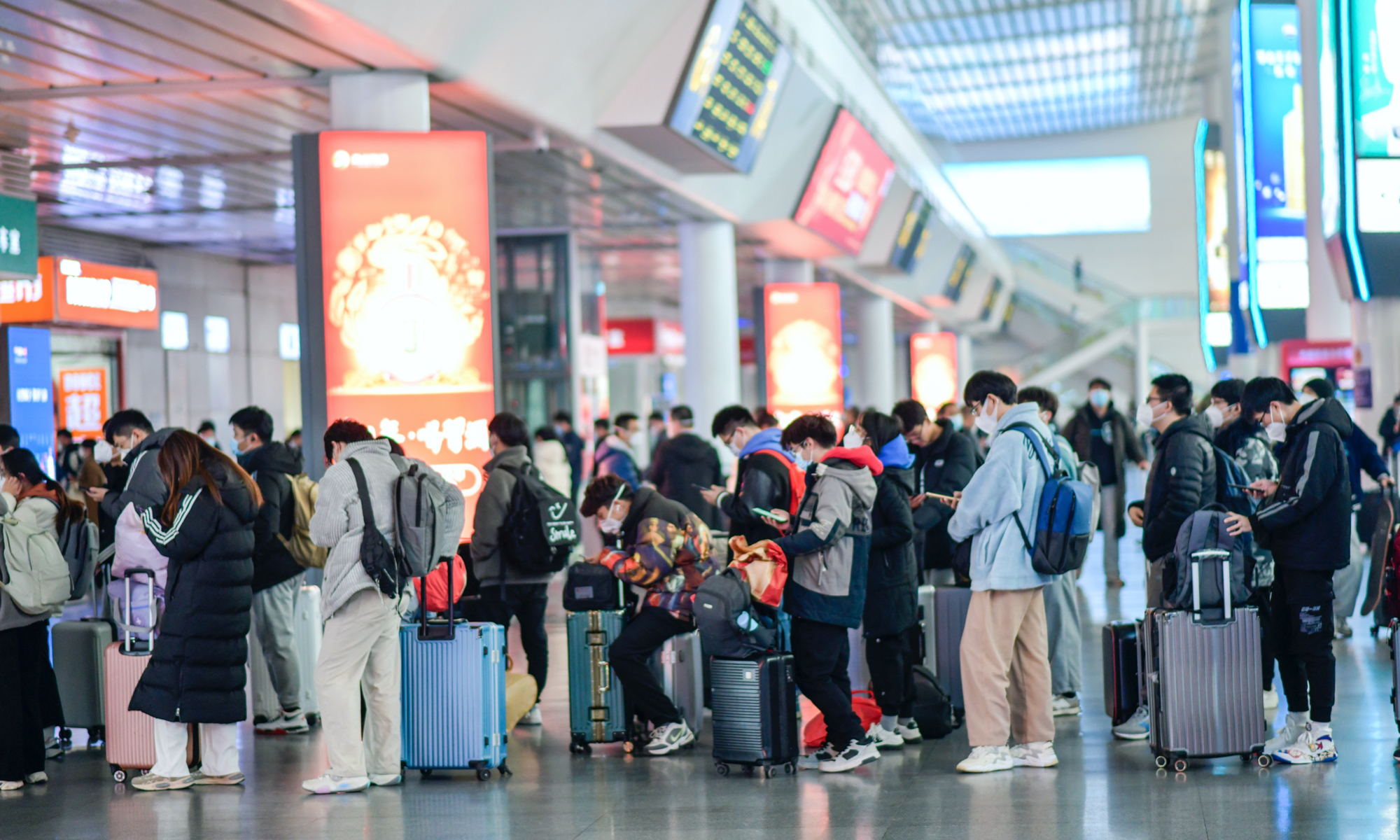
Long lines are seen back at a train station in Jinan, East China's Shandong Province, on December 7, 2022, as China further optimized COVID response and relaxed controls. Photo: IC
China said since COVID began, it has been sharing information on the epidemic in a timely, open and transparent manner in accordance with the law and informing the WHO about China's COVID situation, in response to an appeal from WHO head Tedros Adhanom Ghebreyesus for detailed information, especially on severe cases.
The overall situation in China is currently controllable, as China has deployed more resources and accumulated rich experience in treating severe cases, but health experts warned that the infection peak may reach within a week, posing a challenge for treatment of severe patients.
"Since the outbreak of the COVID-19 epidemic, China has been releasing related information in an open and transparent manner, and also insisted on informing the WHO on the related situation," Chinese Foreign Ministry spokesperson Mao Ning told routine press conference on Thursday.
WHO Director-General Tedros Adhanom Ghebreyesus said the UN agency needs more information on COVID-19 severity in China, particularly regarding hospital and intensive care unit admissions, "in order to make a comprehensive risk assessment of the situation on the ground."
"WHO is very concerned over the evolving situation in China with increasing reports of severe disease," Tedros said. He added that while COVID deaths have dropped more than 90 percent since their global peak, there were still too many uncertainties about the virus to conclude that the pandemic is over.
Since China recently optimized its COVID-19 response, some Western media have been keen on hyping "surging" deaths and severe cases in China. However, statistics released from the authorities refuted these reports and showed the epidemic situation in China is controllable. For example, according to the website of the National Health Commission, seven people have died from COVID-19 in the past week, all of whom were in Beijing.
The overall severity rate among senior citizens in Shanghai remains low and is comparable to that from this March and April when the city was under lockdown, Shanghai-based renowned infectious disease expert Zhang Wenhong said during an online event on Thursday.
But the infection peak may come within a week, which may bring more severe cases and impact medical resources in the city, said Zhang.
Peng Zhiyong, director of the ICU at Zhongnan Hospital of Wuhan University, told the Global Times on Thursday that the situation of severe cases is still under control in Wuhan, the first city in China which reported the COVID-19 outbreak in early 2020.
There are two situations related to severe cases - first, patients have underlying diseases which are exacerbated after COVID-19 infection; second, the patients get severe pneumonia after COVID-19 infection. In the current stage, most severe cases fall under the first type, Peng said.
Currently, we have beds available in the ICU, Peng said, adding that the problem is a shortage of personnel, as many medical staff have become infected. However, many of these infected medical staff are expected to recover and come back to work next week.
Although expressing worries that there would be a surge in cases of the second type in the next week, Peng noted that the situation would be much better compared to the outbreaks in previous two years due to the declined pathogenicity of the Omicron variant.
Wu Zunyou, top infectious disease specialist for China's CDC, predicted at the Caijing Annual Conference on December 17 that between 10 and 30 percent of Chinese people may get COVID-19 this winter, with a risk of death of between 0.09 and 0.16 percent.
As the Omicron variant has significantly reduced pathogenicity, China's COVID-19 policies were put in place at the perfect time, according to Wu, pointing out that the percentage of seriously and critically ill patients in China decreased from 16.47 percent in 2020 to 3.32 percent last year, and this year, "until December 5, the rate was 0.18 percent."
After China announced it was optimizing its COVID-19 response, cases began to surge, especially in major cities such as Beijing, Shanghai and Guangzhou. Authorities have worked to deploy more resources to save severe cases. During a video meeting on Wednesday, the medical team of the State Council required hospitals to make the utmost efforts in saving severe cases of elderly people and children, adding that no hospital should refuse to treat patients with severe illness transferred from other regions.
As of November 28, 2022, China's confirmed COVID-19 cases ratio is 1/374 of the global average, or 1/1,348 of the US'. The death rate is 1/233 of the global average and 1/892 of the US', China's top respiratory disease expert Zhong Nanshan said at a national academic video conference of respiratory diseases held on December 9.




